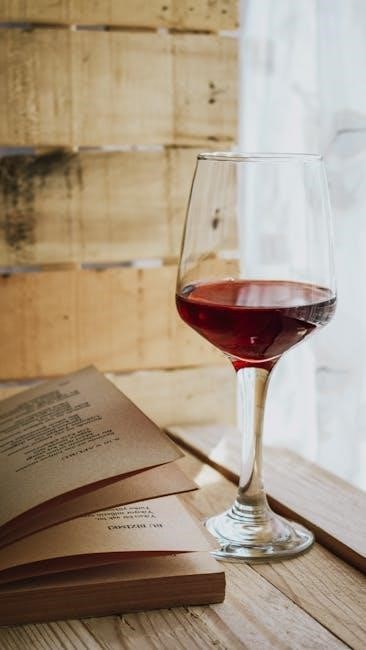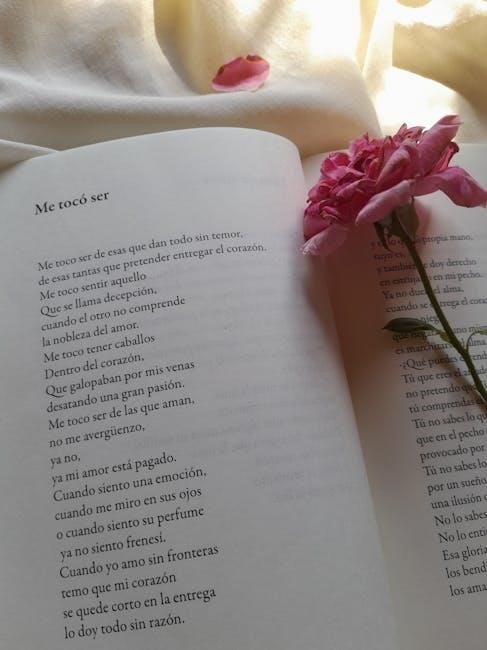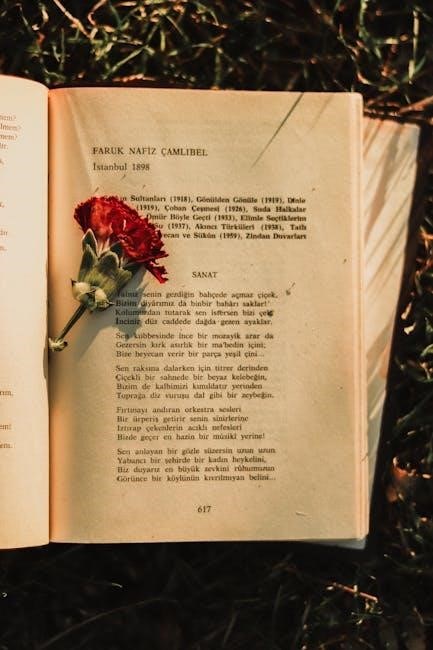Wedding Photography Client Questionnaire⁚ A Comprehensive Guide
A wedding photography client questionnaire PDF is a crucial tool for photographers․ It helps gather essential details, ensuring a smooth process and exceeding client expectations․ This document facilitates clear communication, preventing misunderstandings and guaranteeing a successful photoshoot․ It streamlines the planning, leading to a more efficient and enjoyable experience for both parties involved․ Downloadable templates are readily available online․
Essential Information to Gather
Begin by collecting fundamental client details․ This includes their full names, contact information (phone numbers and email addresses), and physical mailing addresses for any necessary correspondence or delivery of final products․ Inquire about the wedding date, location (both ceremony and reception venues with complete addresses), and the anticipated number of guests․ Clarify the type of ceremony planned – religious, formal, informal, or civil – to understand the overall atmosphere and potential photographic opportunities․ Establish a primary contact person for efficient communication throughout the planning stages, ensuring timely updates and swift resolution of any queries or changes․
Further essential information includes details about the wedding party, specifically the names of the bride and groom, maid of honor, best man, and parents․ Note if there are any other significant individuals or family members who require specific attention during the photography session․ Confirm the couple’s preferred method of communication (email, phone, or text) and their preferred time frames for communication to optimize the flow of information exchange and maintain a streamlined workflow․ This initial gathering of essential details ensures a smooth and organized approach to the wedding photography planning process․
Couple’s Background and Vision
Delve into the couple’s love story; how they met, their relationship timeline, and any unique details that define their connection․ Understanding their personal narrative enriches the photographic storytelling․ Explore their vision for the wedding’s overall aesthetic – romantic, rustic, modern, classic, or themed – to align your photography style with their preferences․ Inquire about their ideal wedding atmosphere⁚ formal and traditional, or relaxed and informal․ This helps anticipate the appropriate photographic approach, ensuring the images reflect their personality and desired mood․ Encourage them to share their inspirations, whether they’re Pinterest boards, specific photographers, or magazine features․ This provides valuable insight into their stylistic preferences and helps you customize your services․
Further, understand their expectations for the level of posing versus candid shots․ Some couples prefer predominantly posed photographs, while others prioritize candid moments․ Clarify their preferences regarding the balance between these two styles․ This ensures you capture images that truly resonate with the couple, reflecting their unique vision for their wedding day․ This section allows you to establish a collaborative relationship, ensuring your photographic work meets their expectations and creates lasting memories that reflect their individual styles and personalities․
Wedding Day Logistics
This section meticulously details the wedding’s schedule and locations․ Begin by clarifying the ceremony and reception venues, including complete addresses and contact information for each location․ Note the precise start times for both the ceremony and reception, along with any significant events or changes in location throughout the day․ Request a detailed list of all vendors involved, including their contact information․ This ensures smooth coordination and avoids conflicts․ Inquire about transportation arrangements for the bridal party and the photographer, including specific pickup times and locations․ This ensures timely arrival at key moments and seamless transitions between locations․
Further, determine the availability of parking at each venue and any potential access restrictions․ Consider potential challenges in advance and make necessary arrangements․ Establish clear communication protocols for the wedding day․ Include contact details for a designated point person who can answer questions and address any unforeseen issues․ This ensures efficient problem-solving and keeps the photography schedule on track․ Confirm whether you’ll have access to a designated area for storing equipment and taking breaks․ These logistical details ensure a smooth, efficient, and well-organized photography session, leading to higher-quality images and a more enjoyable experience for everyone involved․
Photography Style and Preferences
This crucial section delves into the couple’s vision for their wedding photography․ Begin by asking about their preferred photographic style․ Do they envision a photojournalistic approach, capturing candid moments naturally, or a more traditional, posed style? Understanding their preference ensures alignment between your style and their expectations․ Explore their specific preferences for lighting, color palettes, and editing styles․ Do they prefer bright, airy images or darker, moodier tones? Do they have any examples of photography they admire, either from other weddings or photographers? Encourage them to share links or images for reference․
Inquire about any specific shots they envision, such as unique perspectives or creative compositions․ This demonstrates your commitment to personalizing their experience․ Ask about their comfort level with posed photographs versus candid shots․ Some couples prefer mostly candid images, while others desire a balance․ Gauge their preferences regarding the amount of post-processing they desire—minimal edits, dramatic enhancements, or something in between․ Understanding these preferences ensures the final product aligns perfectly with their aesthetic vision․ This detailed understanding helps you tailor your approach to their specific needs and preferences, resulting in photographs that truly reflect their unique personalities and style․
Important People and Family Groups
This section focuses on identifying key individuals and groups for photography․ Begin by requesting a comprehensive list of the bridal party, including names and titles (maid of honor, best man, bridesmaids, groomsmen)․ Clarify any special relationships or dynamics within the bridal party or immediate family that you should be aware of․ This helps you capture meaningful interactions naturally․ Next, gather a list of extended family members the couple wishes to photograph, including their names and relationships to the couple․ Inquire about any specific family groupings they desire, such as extended family portraits or smaller, more intimate groupings of close relatives․ Understanding these dynamics allows for efficient posing and minimizes disruption during the day․
Ask if there are any individuals the couple wishes to highlight for special portraits or specific shots․ This personalization ensures their wishes are met․ Inquire about any special requests for group photos, such as poses, locations, or specific compositions․ This allows you to plan accordingly, ensuring you capture all the essential images․ Confirm the names and contact details of the designated point person for coordinating family and group photos on the wedding day․ Having a reliable contact person streamlines the process and minimizes delays in gathering individuals for photographs․ This detailed approach ensures you capture all the important people and groupings efficiently and effectively․
Shot List and Must-Have Photos
This section of the questionnaire is crucial for understanding the couple’s photographic priorities․ Begin by asking the couple to provide a list of specific shots they envision, whether posed or candid․ This could include traditional shots like the first kiss, the cutting of the cake, or the couple’s portraits against a scenic backdrop․ Encourage them to be as detailed as possible, including specific locations or poses they have in mind․ Incorporate questions about the desired style of photography․ Are they looking for primarily candid shots that capture spontaneous moments, or do they prefer more traditional posed photographs? Understanding their preferences is key to delivering the desired results․
In addition to specific shots, ask the couple to identify any must-have photos․ These are the images that are non-negotiable for them․ It might be a particular family portrait, a shot with a beloved pet, or a specific detail like the bride’s shoes or the wedding rings․ Clarify if they have any particular ideas or inspiration for certain shots․ This could be a reference to a specific photograph they’ve seen or a general style they appreciate․ Understanding their inspiration helps you create photographs that resonate with their personal style and vision for their wedding day․ This comprehensive approach ensures you capture all their desired shots and exceed their expectations․
Timeline and Schedule Coordination
A well-structured timeline is essential for capturing all the key moments of the wedding day․ This section of the questionnaire should detail the schedule of events, from getting ready to the reception’s end․ Begin by asking for the precise timings of the ceremony and reception, including any pre-ceremony preparations․ Include questions about the duration allocated for family portraits, couple portraits, and other group photos․ Inquire about any planned events or activities, such as cocktail hour, first dances, or cake cutting, noting their scheduled times․ Having a clear understanding of the day’s schedule allows the photographer to plan efficiently, ensuring optimal coverage of all important events․
Furthermore, consider asking about travel time between locations․ Knowing the travel time between the ceremony and reception venues, or any other locations where photos will be taken, is crucial for accurate scheduling․ This allows the photographer to account for potential delays and ensure they arrive at each location on time․ The questionnaire should also address the couple’s preferred approach to scheduling․ Do they want a detailed shot list, or are they more flexible and open to the photographer’s suggestions? Understanding their preferences ensures a collaborative and stress-free approach to planning the photography timeline․
Post-Wedding Deliverables
This crucial section clarifies expectations regarding the final product and delivery timeline․ Begin by specifying the number of edited photos the client can expect; Will it be a set number, or a range? Discuss the formats in which the photos will be delivered—high-resolution digital files, prints, or albums․ Inquire about their preferred delivery method (online gallery, USB drive, etc․) and desired turnaround time․ Addressing these details upfront prevents misunderstandings and sets realistic expectations․ The questionnaire should also detail any additional deliverables, such as sneak peeks, wedding albums, or prints․ If these are offered as add-ons, clearly state their pricing and delivery timelines․ Remember to specify the copyright ownership and usage rights of the photographs․
Additionally, this section should outline any post-processing options offered, such as retouching or color grading․ If there are options for different editing styles, provide clear descriptions and examples․ Mention the possibility of creating a highlight video or slideshow, if applicable․ Finally, ensure that the client understands the process for selecting their favorite images, if this is part of your workflow․ Providing a clear and comprehensive overview of post-wedding deliverables fosters trust and ensures client satisfaction․ This upfront clarity prevents potential conflicts later and establishes a clear path for delivering the final product․
Client Communication and Expectations
Open communication is key to a successful photography experience․ This section of the questionnaire should address how the client prefers to communicate (email, phone, text) and how frequently they expect updates throughout the process․ Establish a clear timeline for communication, outlining when they can expect initial contact, updates on scheduling, and delivery of the final images․ Understanding their preferred communication style ensures smooth and efficient interaction․ Ask about their expectations regarding response times—how quickly do they expect you to respond to their inquiries? Setting realistic expectations prevents misunderstandings and ensures everyone is on the same page․
Furthermore, this section allows you to gauge the client’s level of involvement․ Some clients prefer hands-on participation in selecting images and reviewing proofs, while others prefer a more hands-off approach․ Clarifying this preference early on allows you to tailor your communication and workflow accordingly․ It also helps to understand if they have specific questions or concerns, or if they’re comfortable with a more straightforward approach․ Addressing these communication preferences establishes a foundation of trust and ensures a positive collaborative experience for both the photographer and the client, leading to better overall satisfaction․
Contractual Agreements and Payment
This section of the wedding photography client questionnaire PDF should detail the payment structure and contractual agreements․ Clearly outline the total cost, including any potential extra fees for additional hours, prints, or albums․ Specify the payment schedule, indicating the percentage due at booking, any subsequent payments, and the final payment deadline․ Detail the cancellation policy, explaining the circumstances under which refunds may be issued and the conditions that would lead to forfeiting a deposit․ This transparency protects both the photographer and the client․
Include a clause addressing the usage rights of the photographs․ Will the client have exclusive rights to the images, or will the photographer retain the right to use them for promotional purposes? Clearly define the scope of the photographer’s services, specifying what is included (e․g․, number of hours, locations covered, types of photos) and what is not․ This detailed description prevents disputes and ensures a clear understanding of the services provided․ Consider including a section for the client to acknowledge receipt and understanding of the contract terms․ Having this legally sound and comprehensive section in your questionnaire helps avoid future disputes and fosters a positive business relationship․




